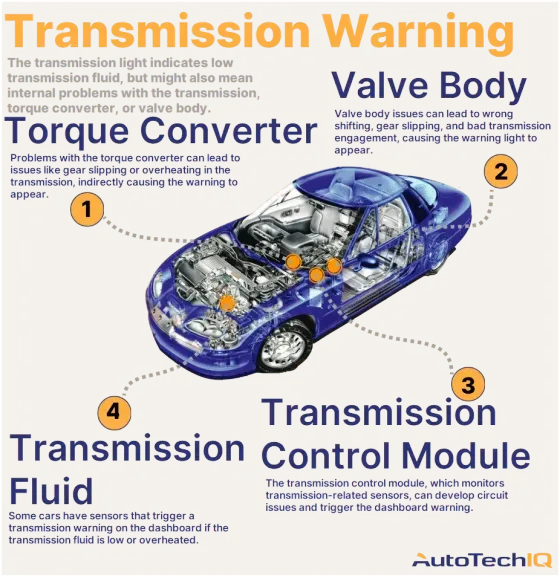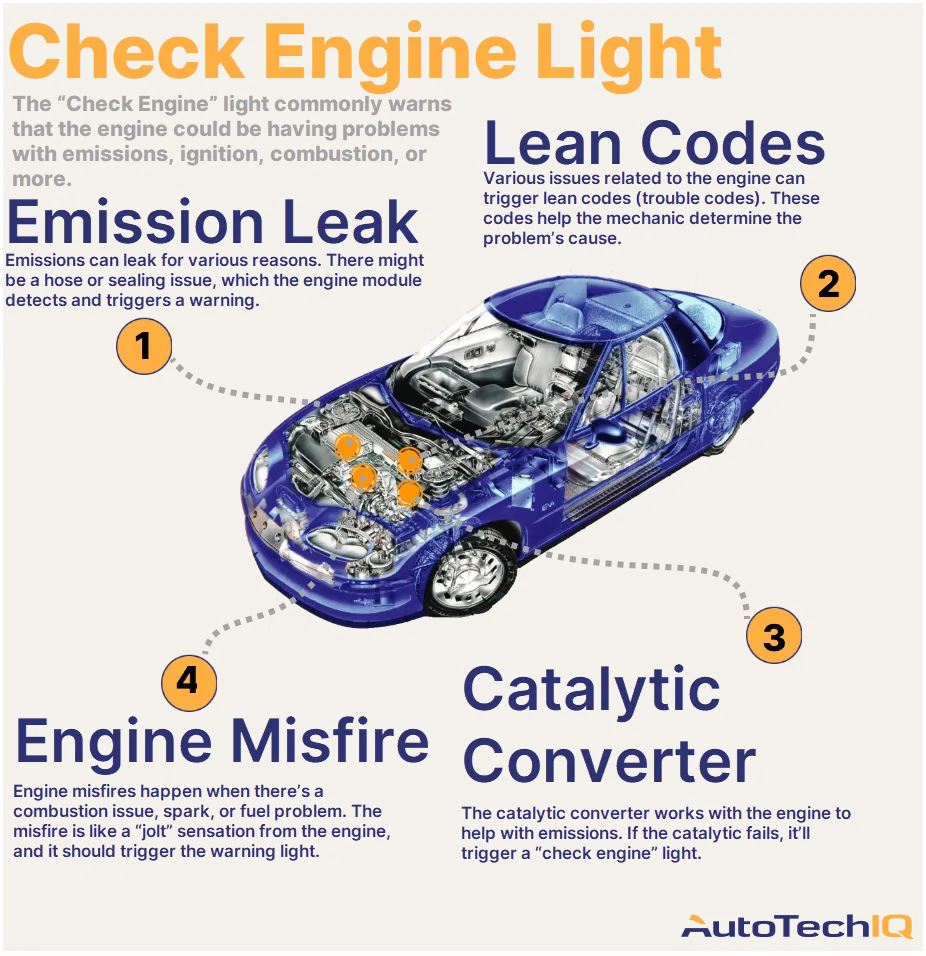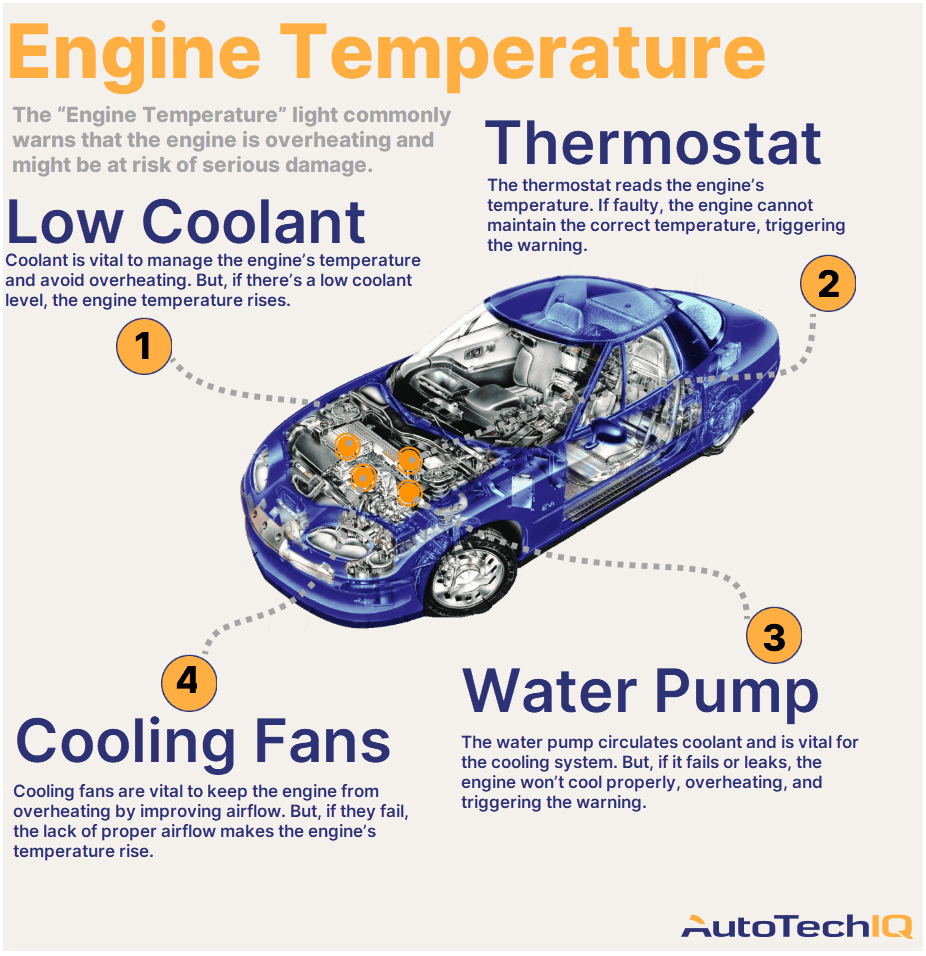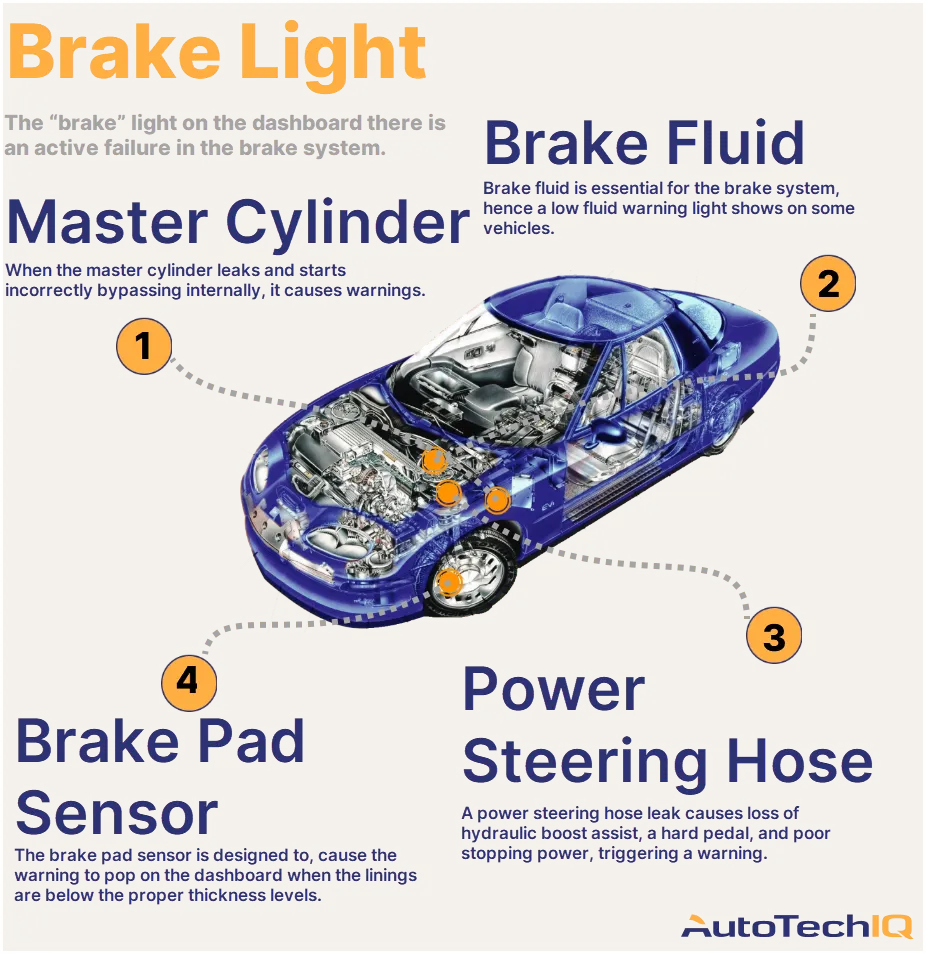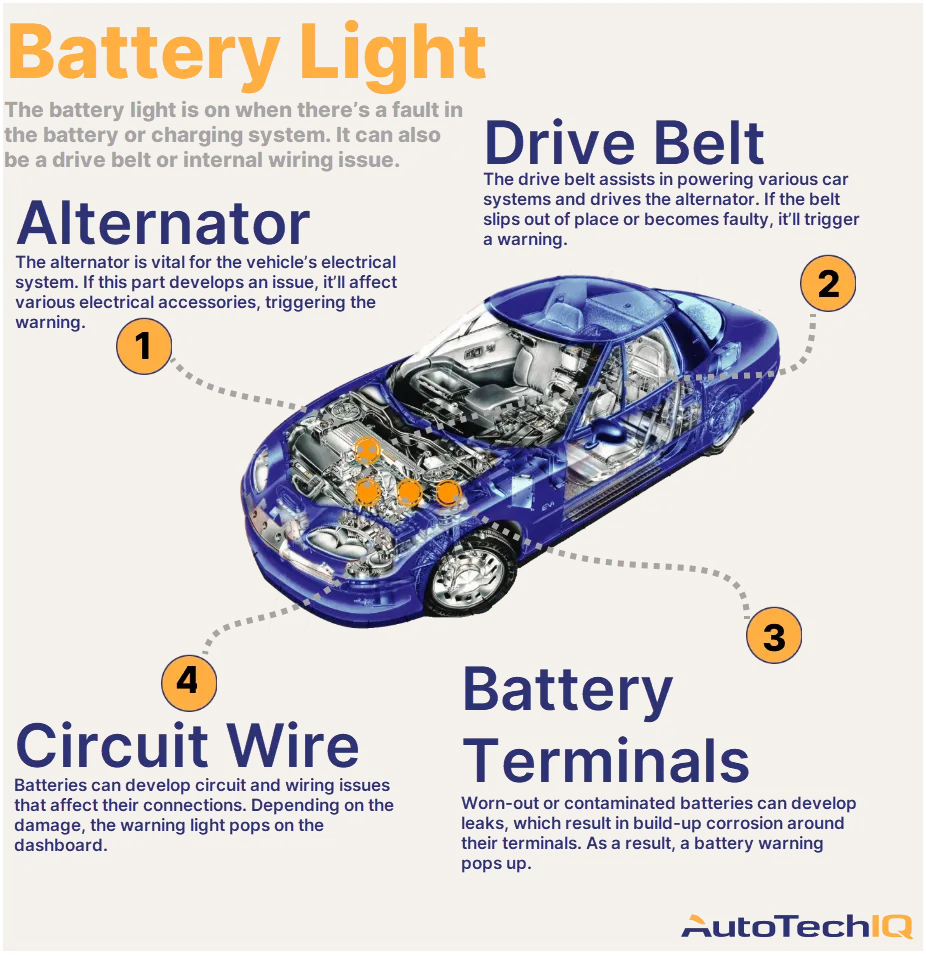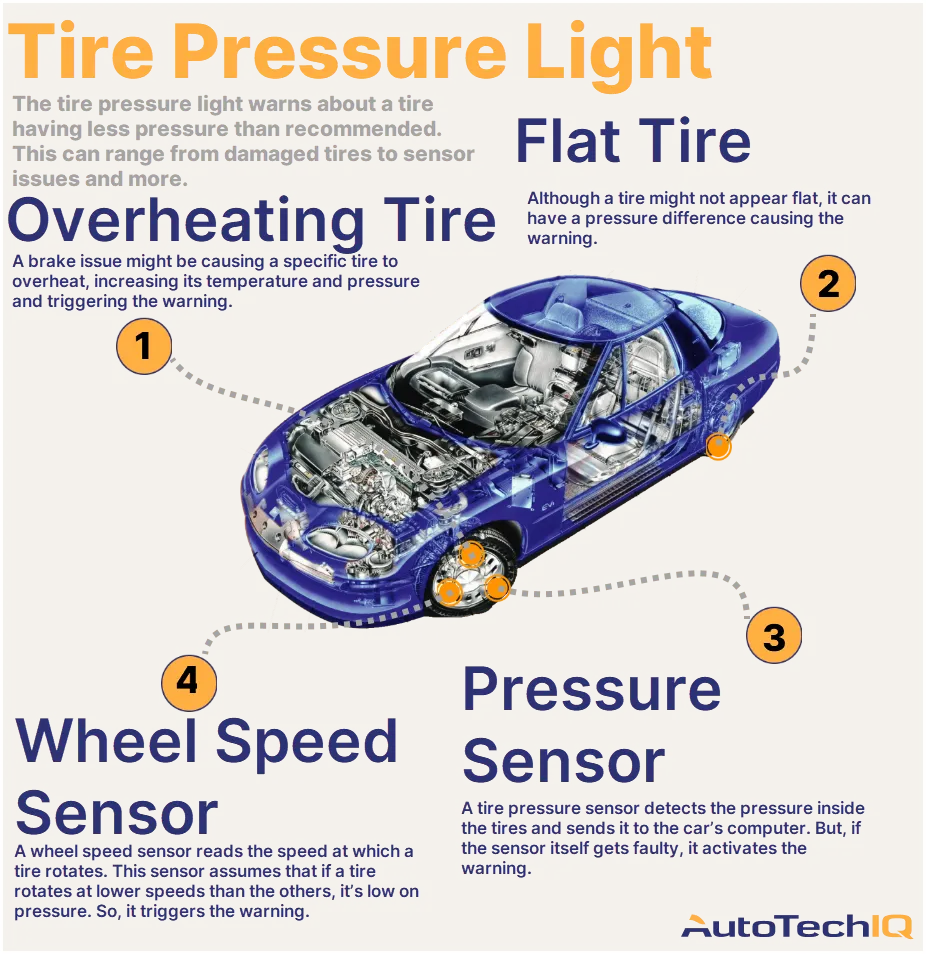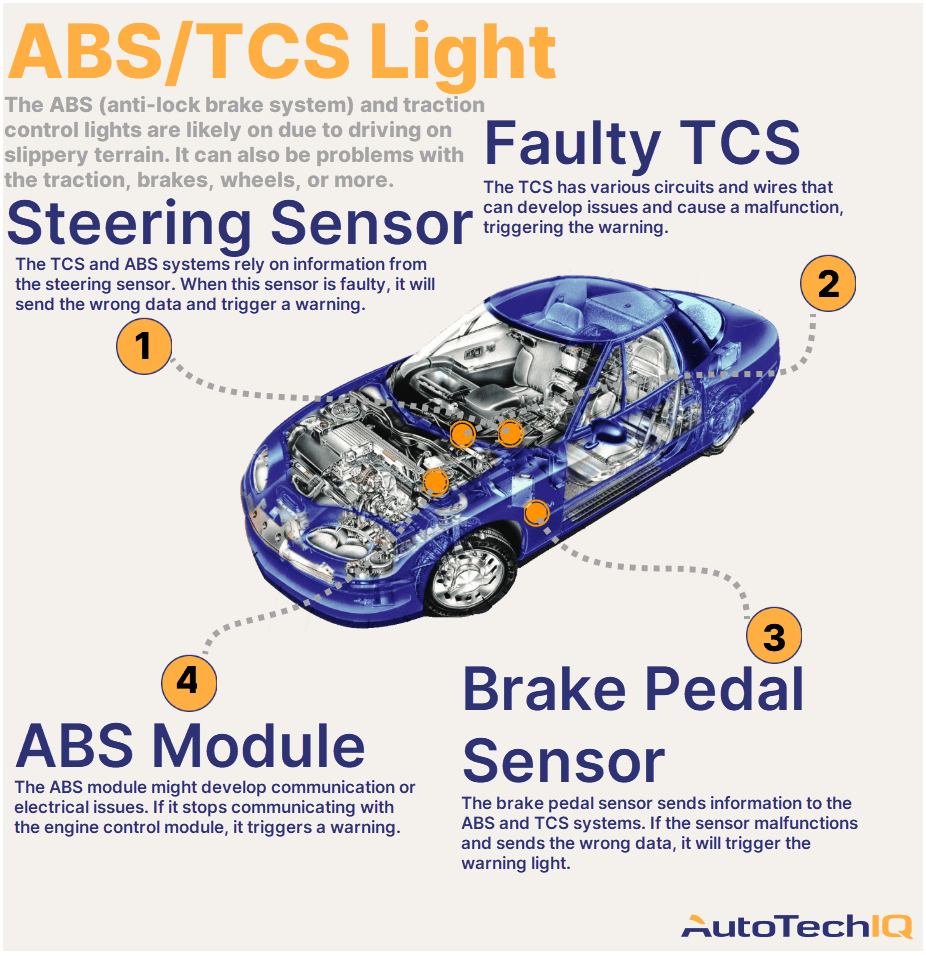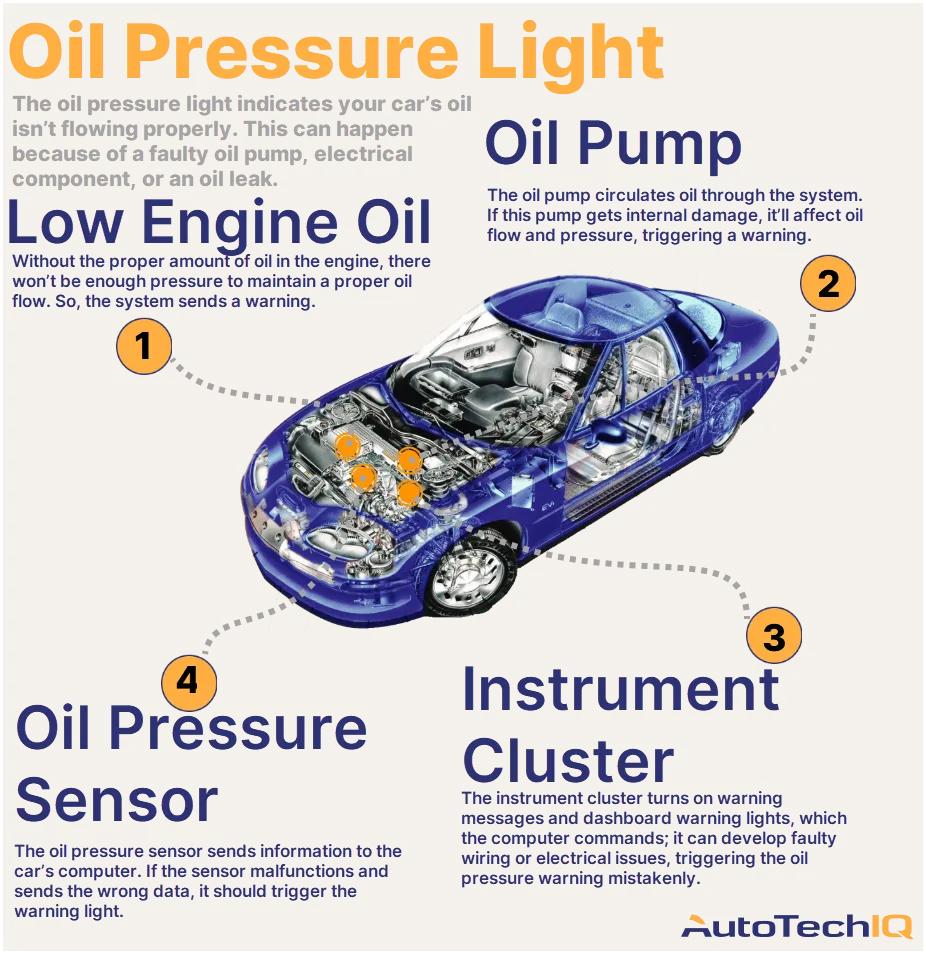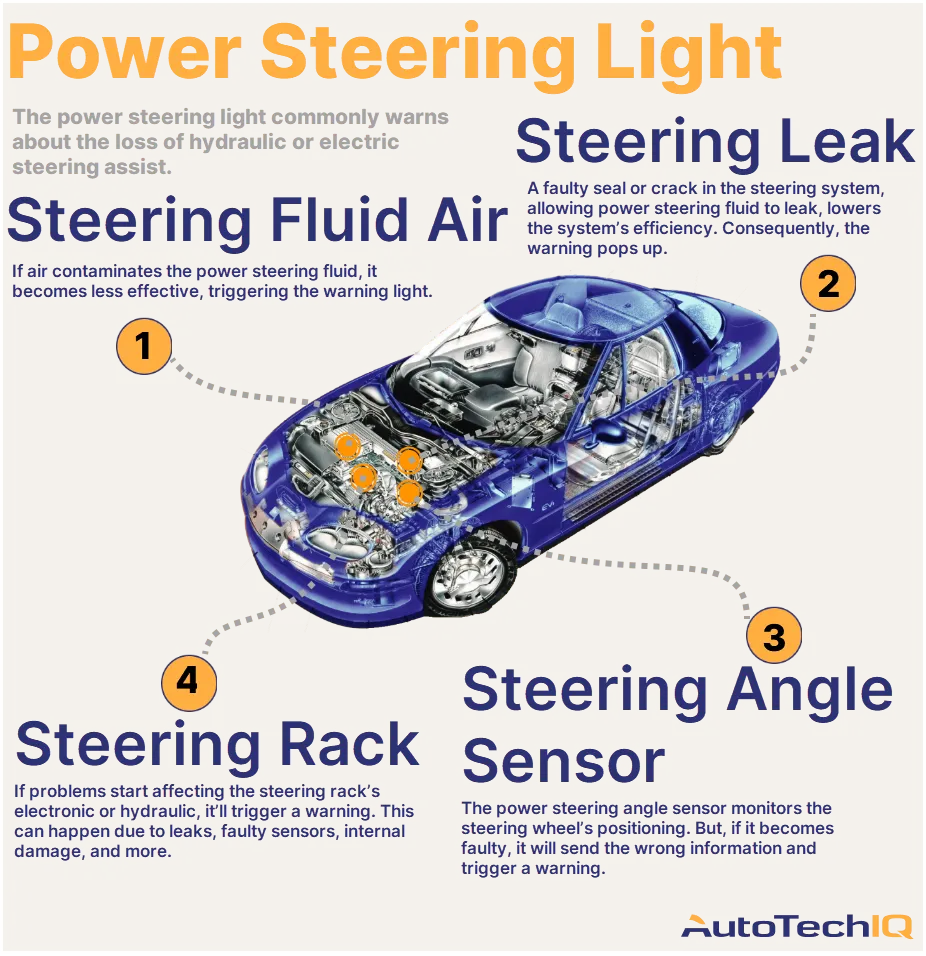Is your transmission fluid low? The transmission fluid is vital to keep your shifts smooth and healthy. Among its duties, it cools down all the internal components inside the automatic transmission system, so they don't overheat. In addition, it also lubricates moving parts, reducing wear and tear. If this fluid is lacking, your transmission overheats faster and suffers further transmission damage.
If you notice a red fluid leak, burning oil smell, squealing sounds, high transmission fluid temperature, or a red check engine light on the dashboard, share these symptoms with the auto shop. These are critical indicators that they need to check.
Is the transmission warning light on, and the car won't shift gears? Automatic transmissions in modern vehicles use various control valves and sensors to keep the fluid and mechanical coupling between the engine and the drivetrain. These vital transmission components trigger an automatic transmission warning light when they fail. Sometimes, the warning has been going on for a while, indicating wear on transmission components. If the driver keeps driving the car regardless, it enters limp mode.
Limp mode is a safety feature that helps protect your car's transmission when it's at serious risk. It limits the speed and power of the vehicle, so you can still drive it, but you won't be able to go as fast or as strong. Think of it as a way for your car to limp to the nearest repair shop to avoid further damage.
It's plausible for computer software to receive false information and trigger the warning light. Still, keep track of shop-relevant symptoms like a stuck gear shift, the vehicle's inability to move, stalling, engine revs, and the inability to cruise control.
Is your car taking longer than usual to shift gears? If your car is taking longer to shift between gears when accelerating or deaccelerating, it might be having internal trouble. Typically, this happens when these components are wearing out and past service limits.
If you notice a lengthy gear shift time, longer startups, high engine temperature, or a red check engine indicator light on the dashboard, share these symptoms with the auto shop. These are critical automatic transmission failures that they need to check.
Is your vehicle shuddering while driving? If you're experiencing a shuddering or stuttering ride while driving, there could be an issue with your car's torque control. This system helps power the wheels, keeping your vehicle running smoothly. The problem might be the torque converter, a fluid coupling between the engine and the drivetrain.
When the clutch that works with this part fails, it can cause the car to shift rough, as if it's unsure of which gear to use. It's essential to address this issue quickly because operating with this problem can cause damage to other parts of the transmission and make the repairs more costly.
Are you experiencing difficulty or a harsh noise when your car changes gears? That's because there's an issue with a part of your transmission called the valve body. This valve controls the flow of transmission fluid, ensuring it gets to the right places at the right time. But, when this valve isn't working correctly, it can cause the car to shift gears late or early, making hard noises. This can happen when insufficient transmission fluid, debris, or worn-out parts clog the valve, causing it to malfunction.
If you're having trouble getting your car out of park, requiring you to press harder on the brake pedal, tap it multiple times, or wiggle the gear shift. This could indicate a problem, and it's time to investigate and find the cause.
Is the gear shift stuck in "park" and can't shift? Inside the transmission system, there are shifter interlocks that hold the shifting stick in place, preventing it from shifting out of "park" mode without the brake pedal active. This safety measure prevents your shift from getting into drive or reversing inadvertently. However, if this fails, it might lock the shifting gear unnecessarily, preventing you from moving it past the "park" position; A quick fix could be to bypass the shifter interlock switch.
If you notice a lengthy gear shift time, engine stalls, vehicle inability to go forward or reverse, engine revving, or a red check engine light on the dashboard, share these symptoms with the auto shop. These are critical indicators that they need to check.
